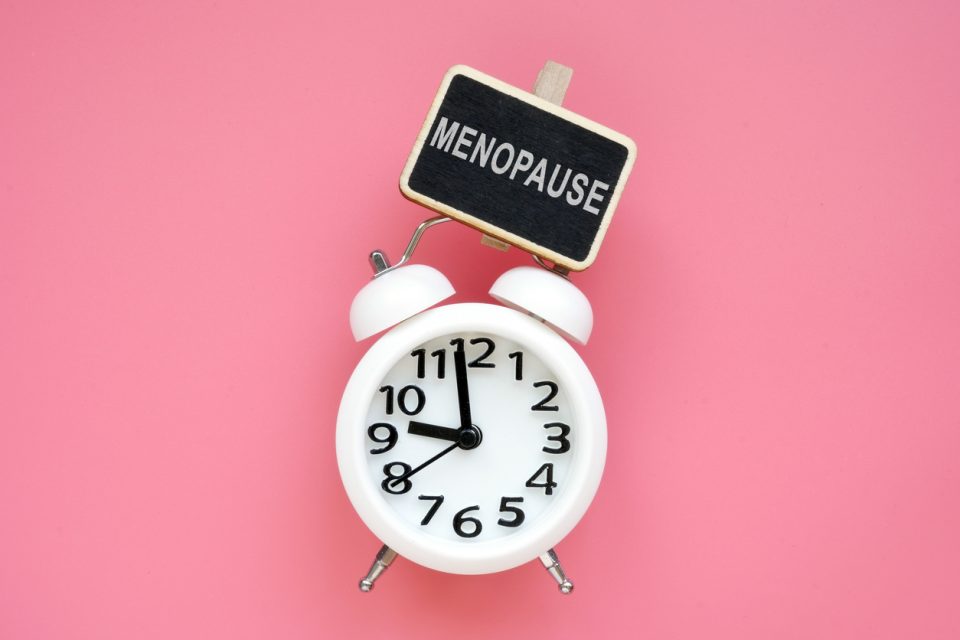By Sandra Gordon | Contributor
You’re exercising like you always have and eating basically the same diet. So why are you finding it harder than ever to zip your jeans? And why do clothes you’ve worn for years suddenly seem snug? If you’ve reached perimenopause, the transitional years prior to menopause when estrogen and other hormone levels start to wane, or menopause itself, take heed.
Menopause doesn’t necessarily mean added pounds. “Not all women gain weight during menopause,” says endocrinologist Loren Wissner Greene, M.D. Still, many do.
According to the Women’s Healthy Lifestyle Project, a five-year, randomized clinical trial published in Circulation, post-menopausal women have higher levels of body fat and central (abdominal) fat than other women the same age.
“They’re prone to what I call the Buddha belly,” says Larrian Gillespie, M.D., author of The Menopause Diet, who knows with what she speaks. Gillespie slowly put on 25 pounds during her mid 40s. “What had once been a dancer’s body had morphed into a spider body—thin arms and legs attached to a large, round torso,” she says.
Falling Estrogen Levels
Gillespie links menopausal weight gain with secondary enzymes produced by the liver that are triggered by falling estrogen levels during perimenopause and menopause.
According to Gillespie, these secondary liver enzymes encourage the body to lay down fat on the hips and abdomen to make up for some of the estrogen the ovaries no longer produce. (Like the ovaries, body fat makes its own estrogen.) “The body always tries to compensate for whatever happens with its next best substitute. In this case, fat is a way to do that,” she says.
The moodiness and depression associated with menopause as well as the loss of muscle mass associated with aging could also be to blame for menopausal pounds, adds Wissner Greene.
Besides making you feel matronly, they can be especially unhealthy. Abdominal weight gain at that time in your life can put you at increased risk for insulin resistance and thus, type 2 diabetes, as well as high cholesterol and heart disease, a major chronic killer that claims more women each year than men, according to the American Heart Association.
Don’t accept mid-life menopausal weight gain as your fate.
Fat Fight
What to do?
“There are things women can do to fight it,” says Wissner Greene. Here’s how to help keep menopausal pounds at bay:
- Try eating mini meals—specifically, five (or so) 250- to-300-calorie meals throughout the day instead of two or more larger meals. According to Gillespie, mini meals help counteract the production of liver enzymes produced during menopause that encourage the body to lay down mid-body fat. They also stabilize insulin levels to ward off insulin resistance, the condition in which your body’s cells become insensitive to insulin; when that happens, glucose, the main fuel for your body, can’t enter your cells and give you energy.
Insulin resistance, which is associated with increased abdominal fat and the development of type 2 diabetes, may also promote fat storage. “When glucose can’t enter your cells, your body gets the message that you’re starving,” Gillespie says. “As a result, you become super efficient at storing carbohydrates as fat instead of using them for energy.”
- Keep exercising. As the body ages, it experiences steady declines in muscle tissue, thus lowering calorie needs, a process that starts in your 20s. Imagine how much muscle you’ve naturally lost by the time your age 45 or so. But physical activity, especially working out with weights (strength training), helps counteract your body’s changing composition and encourages calorie expenditure.
The muscle mass that results from exercise takes more energy to maintain than fat, explains Gillespie. Exercise also helps curtail the liver’s production of fat-storing enzymes. In general, aim for 30 minutes of aerobic activity, such as walking every day and 30 minutes of strength training at least two times a week, if possible.
Physical activity, especially working out with weights (strength training), helps counteract your body’s changing composition and encourages calorie expenditure.
- Watch calories. No matter how much you exercise, you’ll still want to make sure your diet isn’t doing you in with too many calories. To figure out how many daily calories you need to simply maintain your weight, “multiply your weight in pounds by 11,” says Gillespie. Then add 400 to 600 calories for mild to intense exercise.
If your mission is to lose weight, “try to create a 500-calorie daily deficit by exercising off 250 calories and cutting dietary calories by 250,” Gillespie advises. This is just enough of a calorie burn to keep your metabolism humming, while resulting in a weight loss of roughly a pound a week, says Gillespie.
Editor’s Note: This content is not intended to be a substitute for professional medical advice, diagnosis, or treatment, and does not constitute medical or other professional advice.


